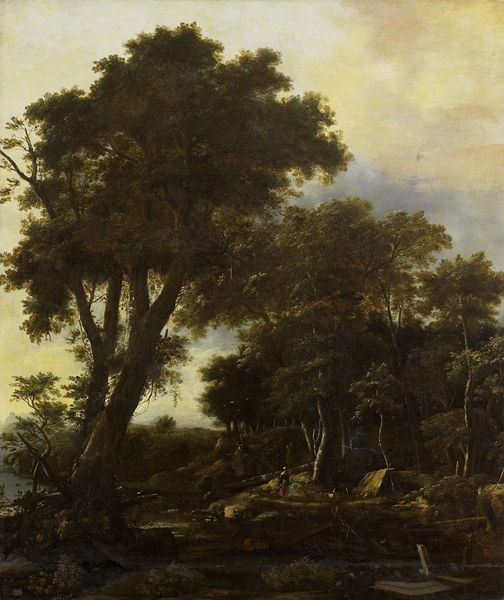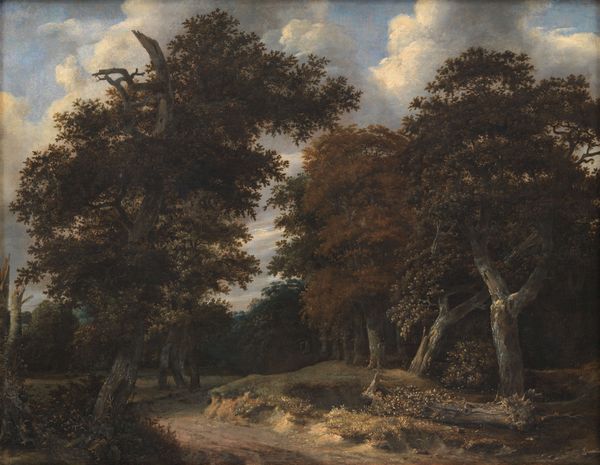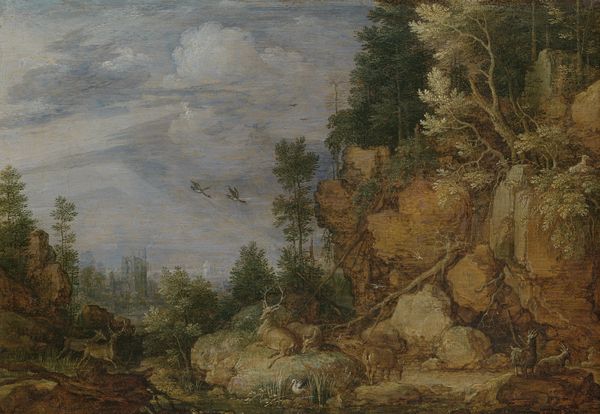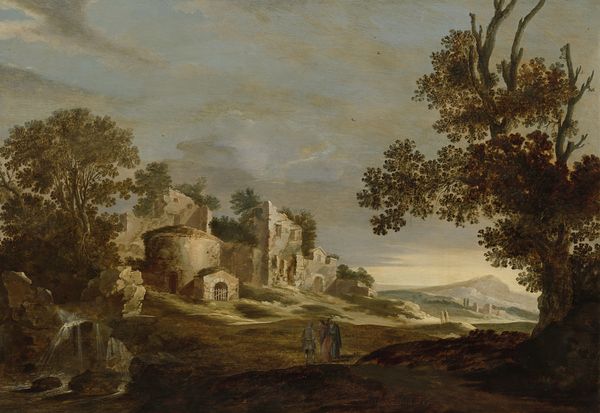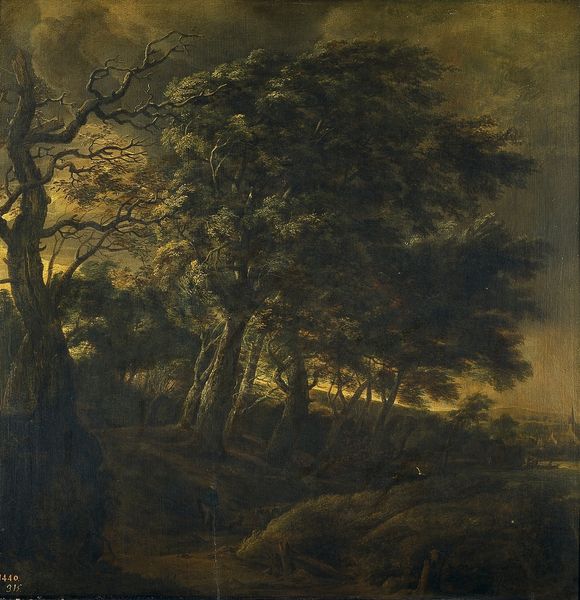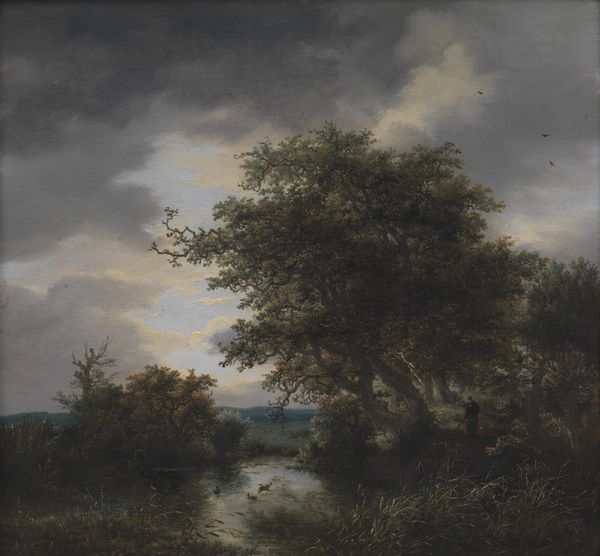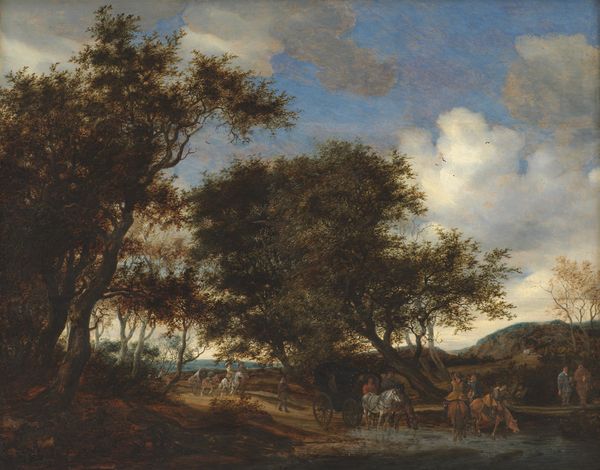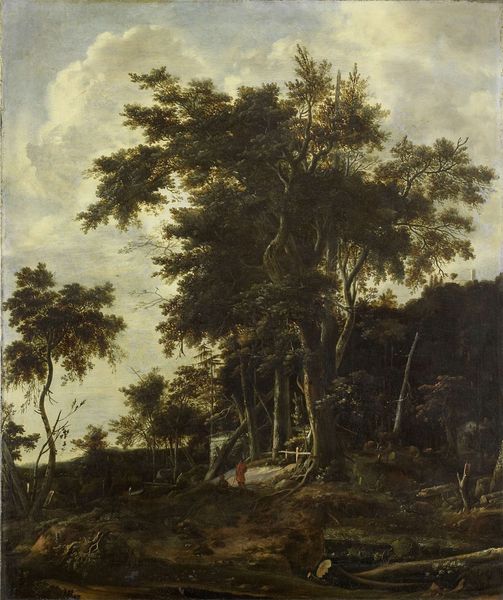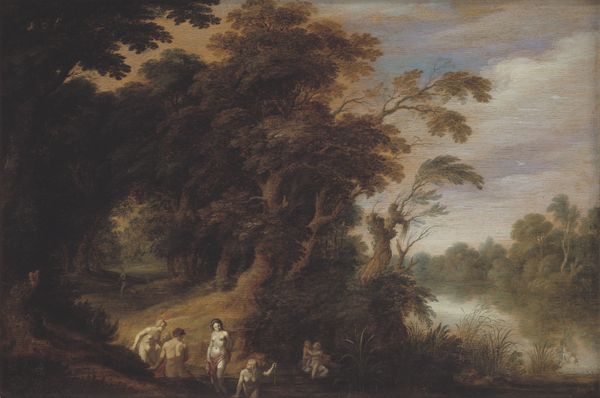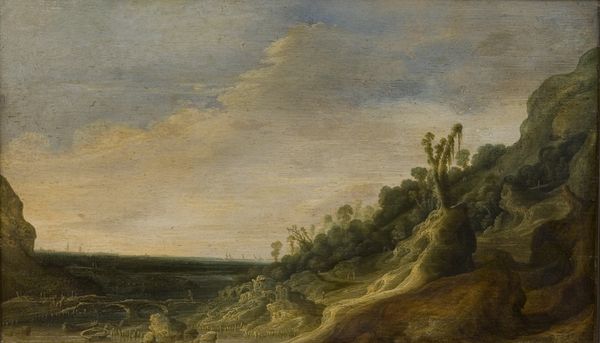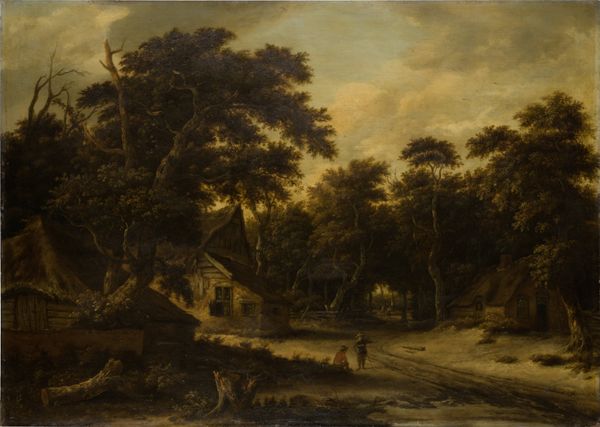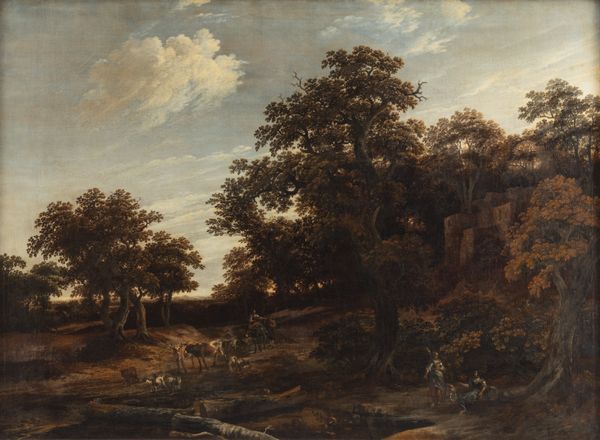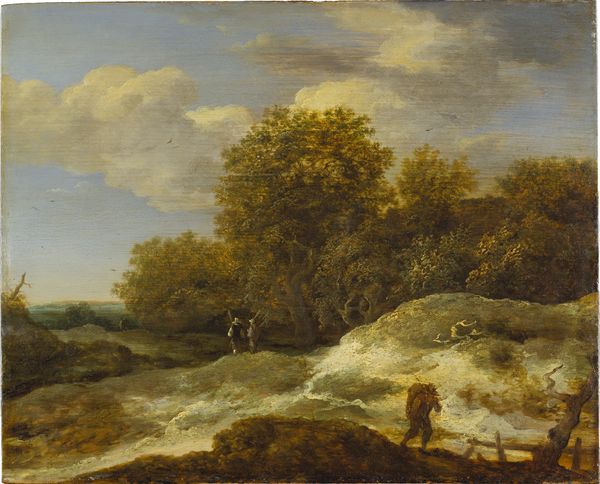
painting, oil-paint
#
baroque
#
painting
#
oil-paint
#
landscape
#
oil painting
#
genre-painting
#
realism
Dimensions: support height 41.6 cm, support width 71.4 cm, outer size depth 6 cm
Copyright: Rijks Museum: Open Domain
Curator: Here we have "Wooded Landscape with a Wildfowler by a Stream," an oil painting created in 1646 by an anonymous artist. Editor: It’s a very evocative piece. The subdued tones create a rather somber, almost melancholic mood, wouldn’t you say? There’s a sense of the land holding stories, secrets…perhaps even suppressed histories. Curator: Absolutely. One could examine the means by which this atmospheric effect was achieved. The blending of colors, the application of the oil paint…It’s quite skillful. It represents a keen awareness of the qualities inherent in the medium itself and its transformative potential. Editor: I see how the materiality contributes, but it feels equally important to ask what it means to represent this particular kind of labor – wildfowling – at this time. Who has access to this landscape? Who is excluded? What does it say about the relationship between humans and nature, especially regarding hunting and potentially exploiting resources? Curator: Well, wildfowling provided a sustenance strategy for some rural populations, didn’t it? Focusing on the wildfowler perhaps helps explore his individual resourcefulness as his contribution to everyday life in the mid-17th century? How it contributes to local economy, etcetera. Editor: Right, but his presence in this landscape, however seemingly minor, speaks to broader patterns of land use and human impact, especially considering how increasingly restricted land ownership was becoming during this period. Was the depicted worker engaged in a sanctioned means for personal and local support, or poaching? The wildfowler himself exists at an intersection of environmental, social, and class tensions. Curator: But we also see such rich material processes reflected in rendering the natural world – look at the texture of the bark, the way light filters through the leaves. Such details reflect direct, experienced interaction between humans and this specific locale. The very paint itself comes from the earth; there is, after all, a relationship between materials. Editor: A relationship rooted in systems of power! Understanding how and why the landscape is represented in this way offers insights into how certain socio-economic structures, too, took root in this time and place. Curator: It all prompts considering connections between artistic practice and manual work; how the making of the image mirrors or departs from the activities it portrays. Editor: Ultimately, it becomes a lens through which we can investigate not only art history, but the broader histories of class, labor, and land ownership that shaped the society in which it was created.
Comments
No comments
Be the first to comment and join the conversation on the ultimate creative platform.
